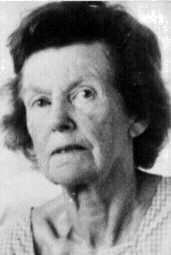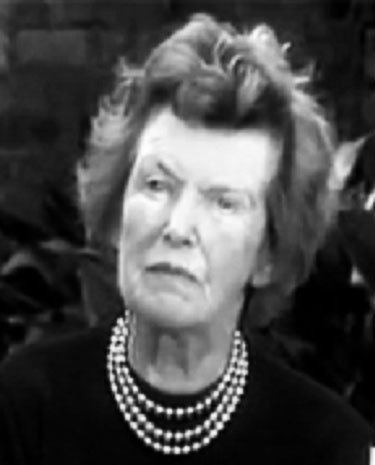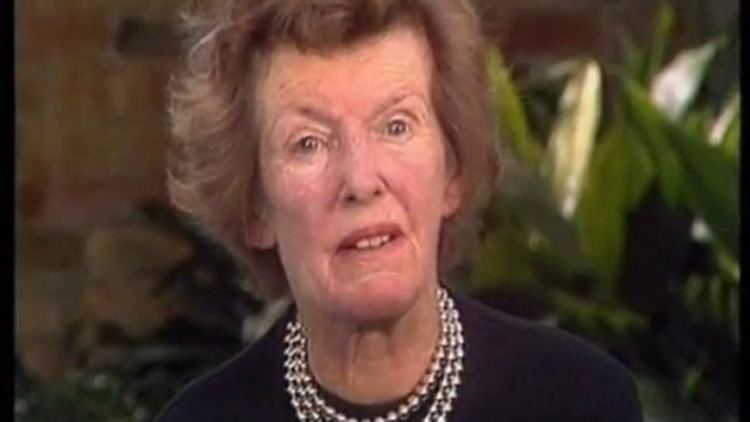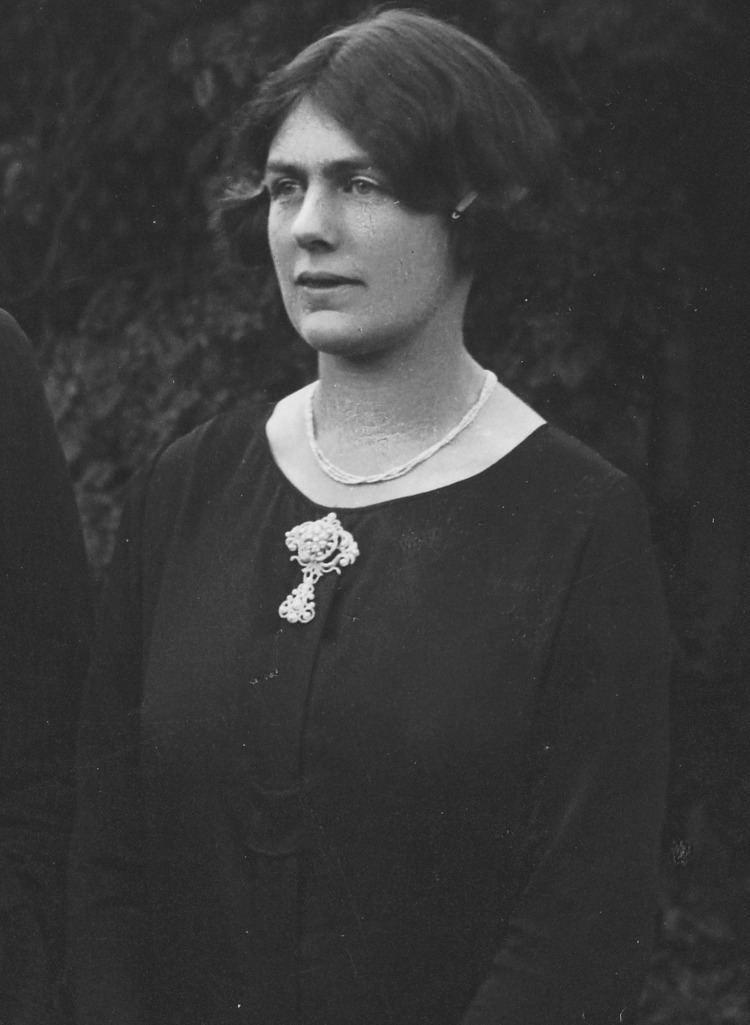Signature Name Joan Lindsay | Movies Picnic at Hanging Rock | |
 | ||
Pen name Serena Livingstone-Stanley Died December 23, 1984, Melbourne, Australia Parents Ann Sophie Weigall, They're a Beckett Weigall Books Picnic at Hanging Rock, The Secret of Hanging Rock, Time Without Clocks, Picnic en Hanging Rock, Picnic at Hanging Rock Pin Similar People Peter Weir, Anne‑Louise Lambert, Helen Morse, Russell Boyd, Tony Llewellyn‑Jones | ||
Australian literature 102 joan lindsay picnic at hanging rock
Lady Joan à Beckett Lindsay (16 November 1896 – 23 December 1984) was an Australian novelist, playwright, essayist, and visual artist. Trained in her youth as a painter, Lindsay published her first literary work in 1936 at age forty under a pseudonym, a satirical novel titled Through Darkest Pondelayo. Her second novel, Time Without Clocks, was published nearly thirty years later, and was a semi-autobiographical account of her early married years to artist Daryl Lindsay.
Contents
- Australian literature 102 joan lindsay picnic at hanging rock
- Picnic at Hanging Rock meeting Joan Lindsay
- Early life
- Marriage to Daryl Lindsay early works
- Picnic at Hanging Rock
- Later life and death
- Books
- Short stories
- Unpublished works
- References

In 1967, Lindsay published her most celebrated work, Picnic at Hanging Rock, a historical Gothic novel detailing the vanishing of three schoolgirls and their teacher at the site of a monolith during one summer. The novel sparked critical and public interest for its ambivalent presentation as a true story as well as its vague conclusion, and is widely considered to be one of the most important Australian novels of all time. It was adapted into a 1975 film of the same name.

She was also the author of several unpublished plays, and contributed essays, short stories, and poetry to numerous journals and publications throughout her career. After the death of Lindsay's husband in 1976, she spent her time involved in the local art community in Melbourne, and was involved in several exhibitions. Her last published work, Syd Sixpence (1982), was her first and only work of children's literature. Lindsay died of stomach cancer in 1984, after which her home was donated to the Australian National Trust; the Lindsay estate now operates as a museum with her and her husband Daryl's artwork and personal effects.

Picnic at Hanging Rock - meeting Joan Lindsay
Early life

Joan à Beckett Weigall was born in St Kilda East, Victoria, Australia, a suburb of Melbourne, the third daughter of Theyre à Beckett Weigall, a prominent judge who was related to the Boyd family, perhaps Australia's most famous and prolific artistic dynasty. Her mother, Ann Sophie Weigall (née Hamilton), was a musician of Irish descent, and grew up in Dublin. Lindsay had two sisters, Mim and Nancy, and a brother, Theyre Jr. Lindsay spent her early years in a villa in St. Margarets, Victoria. She described her childhood as "outwardly happy and uneventful."
In 1909 at the age of thirteen, Lindsay was sent to a local boarding school, then called Carhue, to complete her education. The school went through a change in ownership, and was renamed the Clyde Girls' Grammar School during Lindsay's time there, where she was a model student. After graduating from Clyde, Lindsay considered becoming an architect, but decided to study art instead, enrolling at the National Gallery of Victoria Art School in Melbourne in 1916. There, while studying painting, she was educated by Bernard Hall and Frederick McCubbin.
In 1920 she began sharing a Melbourne studio with Maie Ryan (later Lady Casey). Joan exhibited her watercolours and oils at two Melbourne exhibitions in 1920, one of which was titled "The Neo-Pantechnicists" and exhibited with the Victorian Artists Society. She and Casey also collaborated on an unfinished book together, titled Portrait of Anna.
Marriage to Daryl Lindsay; early works
While studying at the National Gallery of Victoria Art School, she met fellow art student Daryl Lindsay. The two married in Marylebone, London, England on St. Valentine's Day 1922. The day was always a special occasion for her, and she set her most famous work, Picnic at Hanging Rock, on St. Valentine's Day.
When the couple returned to live in Australia, they renovated a farmhouse in Baxter -- Mulberry Hill—and lived there until the Great Depression forced them to take up more humble lodgings in Bacchus Marsh, renting out their home until the economic situation improved. During this time, Lindsay shifted her focus from painting to writing, and wrote two plays, both of which explored the uncanny and the macabre— Cataract, and Wolf!, the latter of which was a collaboration with Margot Goyder and Ann Joske, both of whom were Australia's best-known detective story writers at the time. Though neither of the plays were published, Wolf! was performed on stage in Swanage, England in May 1930.
After returning from travel in England and Europe, Lindsay published her first novel, Through Darkest Pondelayo: An account of the adventures of two English ladies on a cannibal island, in 1936, under the pseudonym Serena Livingstone-Stanley. Published by Chatto & Windus in the United Kingdom, the novel is structured as a parody of popular travel books of the time but filled with intentional grammatical errors, also functioning as a satire on English tourists abroad. According to Lindsay's cousin Martin Boyd, the novel was "one of the best collections of malapropisms in the English language." Lindsay helped Boyd write the outline for his novel, Nuns in Jeopardy (1940).
Lindsay also contributed articles, reviews and stories to various magazines and newspapers on art, literature and prominent people. In 1928, she interviewed actress Margaret Bannerman for Victoria's The Weekly Courier, and, in 1941, co-authored the History of the Australian Red Cross with husband Daryl. In 1942, Lindsay published an essay of literary criticism on novelist George Moore in The Age, titled "A Modern of the Nineties. George Moore: literary craftsman."
During this period, Daryl Lindsay abandoned painting to become Director of the National Gallery of Victoria, a position he held between 1942 and 1955. The position necessitated their relocation to Melbourne until his retirement. They retained their country home during their Victoria sojourn. When Daryl was knighted in 1956, Joan became Lady Lindsay.
Her semi-autobiographical novel Time Without Clocks describes her wedding and idyllic early married life. The work takes its title from a strange ability which Joan described herself as having, of stopping clocks and machinery when she came close. The title also plays on the idea that this period in her life was unstructured and free. This was followed with Facts Soft and Hard, a humorous, semi-autobiographical account of the Lindsays' travels in the United States while Daryl was on a Fulbright Award, which took the couple to New York City on a study tour of American art collections held by the Carnegie Corporation.
Picnic at Hanging Rock
Picnic at Hanging Rock, published in 1967, is Lindsay's best known work. Lindsay wrote the novel over a four-week period at her home Mulberry Hill in Baxter, on Victoria's Mornington Peninsula, and constructed it around the real-life Hanging Rock, a monolith that had fascinated her since her childhood. She compared the story to the work of Henry James, citing the "book about the children in a haunted house with a governess" (ostensibly The Turn of the Screw.
The novel is historical fiction, though Lindsay dropped hints that it was based on an actual event, and is framed as such in the novel's introduction. An ending that explained the girls' fates, in draft form, was excised by her publisher prior to publication.The final chapter was published only in the 1980s, in accordance with her wishes. Lindsay based Appleyard College, the setting for the novel, on the school that she had attended, Clyde Girls Grammar School (Clyde School), at East St Kilda, Melbourne—which, incidentally, in 1919 was transferred to Woodend, Victoria, in the immediate vicinity of Hanging Rock itself.
In a 1974 interview, Lindsay addressed readers' and critics' questioning about the novel's ambiguous conclusion, saying:
Well, it was written as a mystery and it remains a mystery. If you can draw your own conclusions, that's fine, but I don't think that it matters. I wrote that book as a sort of atmosphere of a place, and it was like dropping a stone into the water. I felt that story, if you call it a story—that the thing that happened on St. Valentine's Day went on spreading, out and out and out, in circles.
The novel's inexorably ambiguous conclusion led to significant interest from both public and critical readers, and the novel has drawn comparisons from literary critics to the work of E.M. Forster and Nathaniel Hawthorne. It was made into a 1975 feature film by producers Patricia Lovell, Hal and Jim McElroy, and director Peter Weir, which was hailed as initiating a Renaissance in Australian film. A re-printing of the novel in 1975 by Penguin Books in Australia sold over 350,000 copies, making it Penguin Australia's best-selling novel of all time second to AB Facey's A Fortunate Life.
Later life and death
In 1969, Lindsay suffered severe injuries in a car accident and she required months of convalescence. Daryl Lindsay died on Christmas Day 1976. Lady Lindsay's later years were spent invested in visual arts, with frequent visits to the Lyceum Club in Melbourne, and to the McClelland Gallery in Langwarrin, where she was involved in the local art community.
She painted several works in her later years, and she was lauded by the art critic, Alan McCulloch. In 1972, she reunited with Lady Maie Casey and held an art exhibition at the McLelland in Langwarrin. Artist Rick Amor and his children, who had lived in a cottage of Lindsay's property, led her to resurrect an unpublished children's book she had written, titled Syd Sixpence, which she published in 1982. Amor supplied illustrations for the book, which tells the story of Syd, an anthropomorphic sixpence coin's adventures on the ocean floor. Lindsay also worked on another novel, entitled Love at the Billabong, which was left unfinished.
Lindsay died of stomach cancer at Peninsula Private Hospital in Frankston, Melbourne on 23 December 1984. She was cremated, and her ashes are interred at Creswick Cemetery in Creswick, Shire of Hepburn in Victoria, Australia. Because the Lindsays had no children, their Mulberry Hill home in Langwarrin South, Victoria was donated at her wishes to the National Trust upon her death. The Mulberry Hill estate is open to the public for self-guided tours, and contains both Joan and Daryl Lindsay's original artwork and personal possessions.
Lindsay's visual artwork has been exhibited posthumously as part of the National Women's Art Exhibition in Australia.
